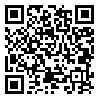BibTeX | RIS | EndNote | Medlars | ProCite | Reference Manager | RefWorks
Send citation to:
URL: http://tbj.ssu.ac.ir/article-1-888-en.html

 , Ali Dehghani
, Ali Dehghani 
 , Morteza Javadzadeh *
, Morteza Javadzadeh * 
 , Henghameh Zandi
, Henghameh Zandi 
 , Hassan Mozaffari khosravi
, Hassan Mozaffari khosravi 
 , Ghilda Eslami
, Ghilda Eslami 

Introduction: Microorganisms may be present in the form of spores, in honey. One of these dangerous organisms is the bacterium Clostridium botulinium spores which are capable induced botulism particularly in infants. The aim of this study was to determine the prevalence of Cl. botulinum spores in honey produced in different regions of Iran.
Method: This cross-sectional study was performed in 2013. A total of 130 honey samples were collected and analyzed for Cl. botulinium spore. Samples were chosen randomly from the apiary of Iran. The samples were examined according to Iranian standard. In laboratory, honey samples were investigated using thermal shock and they located in cooked meat medium and incubated for 10 days at 35°C. The bacterium spores of Clostridium perfringens (PTCC: 1766) was used as a positive control sample.
Results: The Results showed that Cl. botulinum spore was not detected in any of examined samples. Thirty four samples (26.67%) had mold and yeast contamination higher than the Iranian standard limit. Samples from Kurdestan province had high contamination (66.6%) and it was higher than other regions. Honey samples from Mazanderan province had the lowest prevalence of mold and yeast with ranged from 30 to 55 CFU/g.
Conclusion: Overall, the contamination of honey with Cl. botulinum spores in examined samples was zero and so they are safe, but some samples had mold and yeasts contamination that honey samples collected from west and north regions had the high and low contamination, respectively.
|
This Paper Should be Cited as: Bahador Hajimohammadi (Ph.D), Ali Dehghani (Ph.D), Morteza Javadzadeh (M.Sc), Nabi Shariatifar (Ph.D), Hengameh Zandi (Ph.D), Hassan Mozaffari-khosravi (Ph.D), Gilda Eslami (Ph.D).Clostridium Botulinum Spores and Fungal Contamination in Honeys of Iran. Journal Tolooebehdasht Sci |
Received: 2014/04/22 | Accepted: 2014/05/26 | Published: 2017/03/15
| Rights and permissions | |
 |
This work is licensed under a Creative Commons Attribution-NonCommercial 4.0 International License. |



